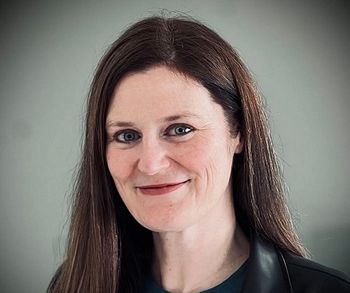
Medical schools seek to prevent cuts to NIH funding
The National Institute of Health is facing steep cuts next year, and has yet to spend billions this year. The AAMC is pushing Congress to help the largest federal source of aid for medical research.
Medical schools are pushing to preserve research funds at the National Institutes of Health, for this year and next year.
The Association of American Medical Colleges has put out
The NIH is by far the leading source of federal funds for medical research, providing funds to medical schools, hospitals and other institutions nationwide.
Heather Pierce, the AAMC’s senior director for science policy and regulatory counsel, says she’s encouraged that lawmakers in Congress have indicated that they want to go beyond the White House’s budget proposal for 2026.
“The NIH is the engine behind scientific progress in the United States,” Pierce tells Chief Healthcare Executive®. “There are a lot of distractions and we want to make sure that some focus remains on the critical time we're in right now where Congress is deciding the funding levels for NIH going forward.”
The Senate Appropriations Committee went beyond the administration’s request in July, and
“Neither of the committees in the House or the Senate that are proposing funds for next year seem inclined to take up that 40% cut to the NIH, which reflects Congress' approach to bipartisan support for this critical endeavor that has lasted for years,” Pierce says. “We continue to be hopeful that that will move forward.”
The push for NIH spending comes as lawmakers in Congress are facing
In addition, the AAMC and other groups are pressing the NIH
Through June 30, the NIH had spent $30 billion, compared to $34.7 billion the agency obligated during the previous year. Pierce says the NIH has accelerated its approval process and made significant progress, but the agency still has to award billions of dollars before the end of the month, which is less than two weeks away.
“There's still a ways to go,” Pierce says. “As of yesterday, there was a little over $4 billion left to spend, but they've shown that there are ways to get that money out so it doesn't revert to the Treasury. So that's a positive step forward.”
Even with delays in awarding grants this year, the NIH financed projects at more than 2,500 institutions, supporting more than 300,000 scientists, the AAMC points out in its report. Those grants were awarded to recipients in all 50 states and Washington, D.C.
The AAMC is looking to make sure policymakers - and the public - understand how much research the NIH is supporting nationwide.
“I think it’s not well understood how broad the reach of the NIH is,” Pierce says. “This is not only impacting health care and health in every community in the United States, based on research that's already taken place. But most people live within a short radius of an NIH-funded researcher. That might surprise people.”
Academic medical centers, hospitals and universities have also been stung by
Some medical schools and universities have had to scale back or scrap some research projects, and some institutions have had to cut staff due to the cuts.
The AAMC is trying to raise awareness of how much the NIH’s research drives local and state economies.
“We need to be talking more about the economic impact of improving health,” Pierce says. “Health care is expensive and the more that we can do to treat and prevent diseases, that has an impact on the economy. In addition, the support of all of these researchers and the thousands of institutions has a really direct impact on the surrounding communities … and so that helps attract researchers, it helps develop careers, create and fund communities and the businesses around them.”
Universities and hospitals have also objected to
Universities and medical schools say some of those “administrative costs” cover essential elements of research, such as lab operations and security, and capping those costs is essentially cutting their funding.
While the AAMC is looking to make the economic case for supporting the NIH, the group is also pointing to the importance of the work being financed, including research at LSU Health in the cognitive decline in individuals who have suffered strokes.
The AAMC also highlighted studies at the University of Utah Health to reduce substance use disorder in new mothers, and studies examining outcomes in breast cancer patients with obesity at the University of Kentucky Markey Cancer Center.
Pierce stresses the value of universities and health systems explaining to the public the work that they are doing.
“Academic medical centers researchers need to and are continuing to tell the story of their research,” Pierce says.






































